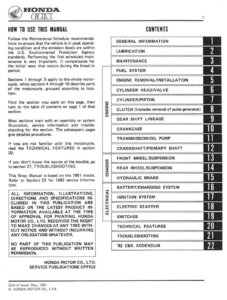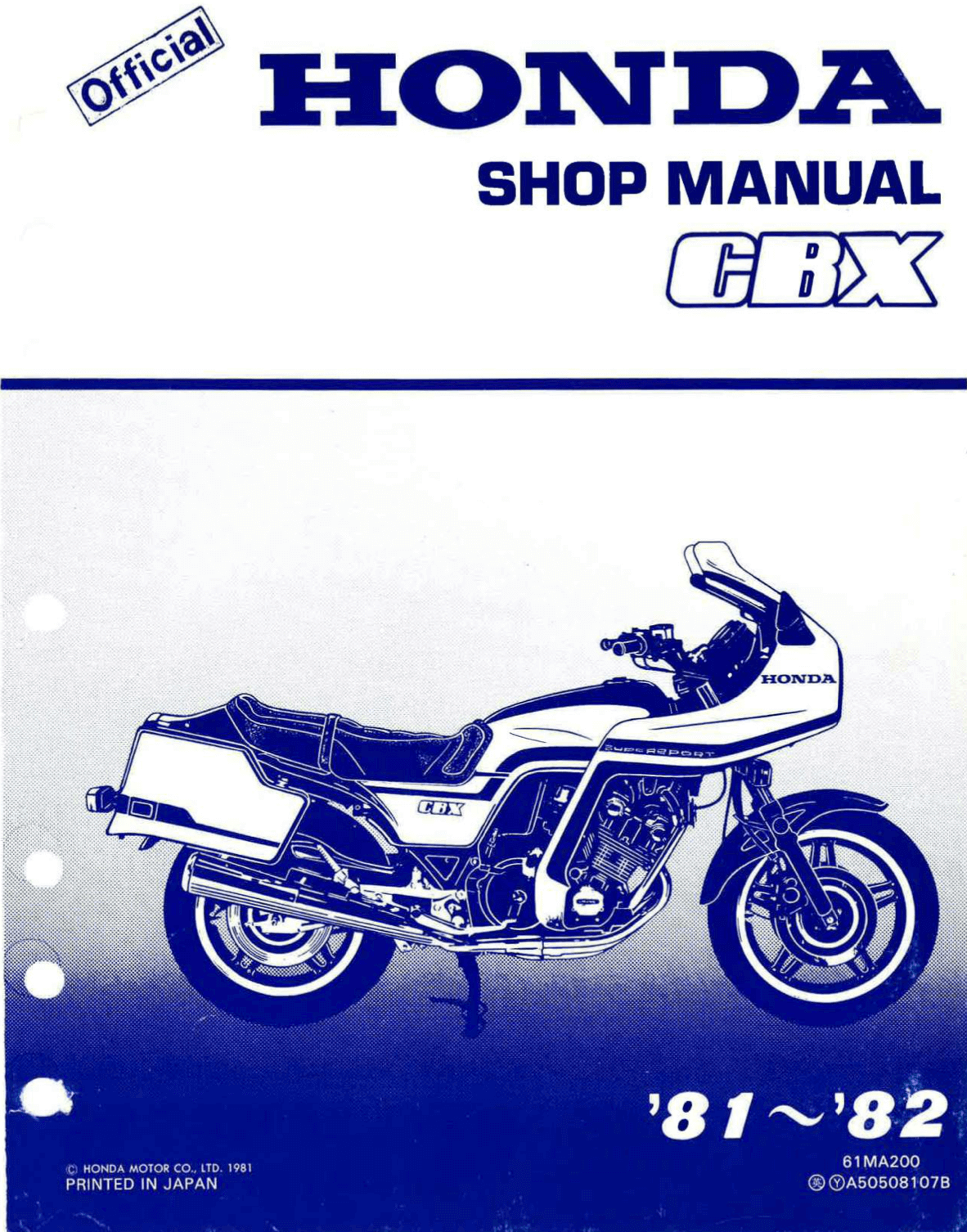Complete PDF version of the Service Manual for the Honda CBX. A MUST for every CBX owner.
Download: Immediately after payment!
OEM Original factory workshop manual.
Models covered by this manual: 1978-1982
Number of pages: 338 pages
Table of contents:

This PDF repair manual can be downloaded right after the payment process in complete, on the device of your choice. You will also receive the download link by email along with your receipt.
We do not offer printed manuals, for the following reasons:
- it is more eco-friendly to use a digital version
- your manual never gets dirty or greasy
- you can always choose to print the specific page(s) you need to work on your bike
- you receive your manual immediately after payment
- it is searchable

Honda CBX
Honda produced the Honda CBX sporting motorbike from 1978 until 1982. It was Honda‘s flagship model, with a 1047cc inline six-cylinder engine delivering 105 horsepower (78 kW). The CBX was well-received by the press, although it was outsold by its twin, the Honda CB900F, which was debuted in late 1979.
Engine characteristics
Honda had built a six-cylinder race bike in the Honda RC series in the mid-1960s, but the CBX was Honda’s first production six-cylinder road bike utilizing its GP racing engine technology. The CBX’s innovative DOHC 24-valve inline six-cylinder engine was its standout feature, but the rest of the bike was standard, with telescopic forks, a tubular frame, dual rear shocks, and straight handlebars.
Despite its size, it was just two inches wider than a CB750. Because the CBX featured a stacked engine accessory layout, the alternator and ignition elements were located behind the cylinder block, the width across the crankshaft was quite narrow. This configuration created an adequate engine width low down and put important components out of harm’s way in the case of a grounding.
“Don’t tell me that its engine is excessively wide: It is no larger than a rider’s knees, so it adds nothing to the frontal area, and personally I would rather have my legs shaded by a cylinder each than exposed to every blow,” wrote journalist L. J. K. Setright of the CBX.
Sport touring model
Honda placed the CBX into the sport touring category with the CBX-B in 1981, detuning the engine to 98 horsepower (73 kW) and adding Pro-Link monoshock rear suspension, air-adjustable 39 mm front forks, a fairing, and optional panniers, all supported by a sturdier chassis. Due to the additional weight, the CBX had vented dual front brake discs. The 1982 CBX-C model altered little from the 1981 model, with just minor cosmetic modifications to the color and trim.
Reception
After a four-day assessment at Orange County Raceway, Willow Springs Raceway, and the Webco dynamometer, editor Cook Neilson stated in the February 1978 edition of Cycle (magazine): “The aim – to produce the quickest production motorbike for sale anywhere in the world – has been met.” Setright noted, when comparing the CBX to the CB900F, “The CBX feels and rides better, and the difference is more than the price difference, so the more expensive bike is actually the better deal. The CBX engine is as responsive as a racer, and it is the most beautiful cycle motor to ever grace the streets “.
The CBX was preceded by the six-cylinder Benelli 750 Sei, which was based on the Honda CB500 Four from 1972 to 1978, but it was the most recent and sophisticated introduction into the competitive superbike market. Cycle magazine complimented the CBX’s look, idea, and performance, calling it a “breakthrough for the Japanese motorcycle industry.” The CBX went on sale in late 1978, and the commercial model was quicker than the prototype. Cycle World recorded a 1/4 mile pace of 11.64 seconds at 117.95 mph (189.82 km/h); the 1978 cycle was also the first to exceed 130 mph (210 km/h). The 1979 CBX could run a quarter mile in 11.36 seconds and reach a top speed of 117.95 mph (189.82 km/h).
However, later CBXs with saddlebags and a fairing were detuned, revealing that the 1981 CBX had lost five horsepower compared to the 1978 model, dropping from 105 hp to 100 hp.
When it was first released, Cycle Guide referred to it as “the Vincent Black Shadow of 1979.” The CBX was rated one of the top 12 superbikes of all time by the Australian publication 2 Wheels Magazine in 2011.
To prevent confusion with Honda CBX series bikes, the CBX is sometimes known as the CBX1000.
Source: Wikipedia

